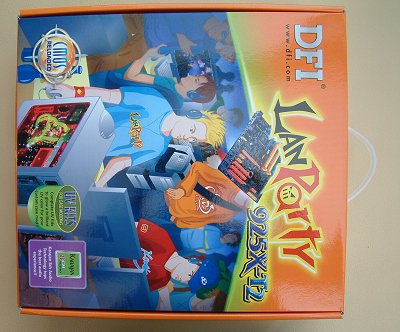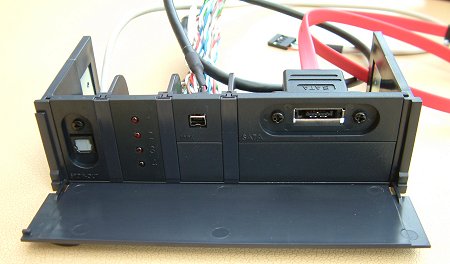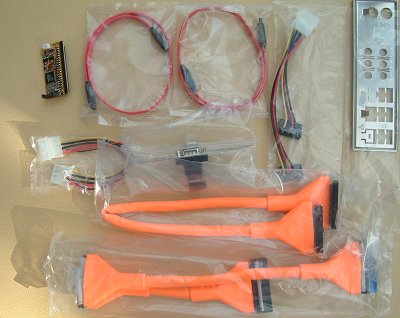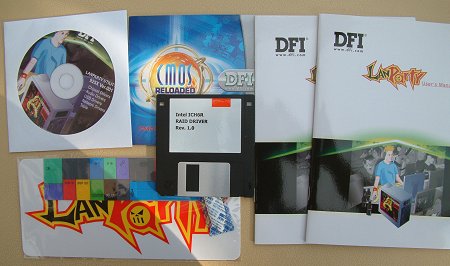Bundle and presentation
LANPARTY models have set a new standard in overall packaging. Oversized boxes, often full to the brim with every conceivable extra, are DFI LANPARTY's trademark.
You'd be forgiven for thinking that DFI had innocuously included an entire SFF PC in the box. A total weight of around 3KG is proof enough that DFI takes board packaging seriously.

The actual motherboard's box is hidden under boxes for FrontX, cables, and PC Transpo elements of the package. There's also the aforementioned Karajan audio riser card and sleeve kit. The UV-reactive kit comprises of a couple of sleeves which you guide your cables through, a whole bunch of tie wraps, and heatshrink tubing. It's one of those extras that makes good sense and costs very little to add in.

DFI has been using FrontX's modules for a while now. The plastic shell mounts into a spare 5.25" bay and its modular nature allows the user to add various connectivity options. This FrontX kit ships with SATA, FireWire, S/PDIF ports. There's also provision for 4 LEDs that are designed to troubleshoot problems during the POST sequence. Assuming there's an error, the LEDs will remain lit in a particular pattern that's cross-referenced with the manual. It certainly beats having them on located directly on the motherboard.

4 SATA ports and only two cables and power adapters, DFI's been a touch stingy here. A custom I/O shield is needed due to the highly irregular back panel which is devoid of legacy ports. Only a single serial port is included. The rounded cables are standard UV-reactive, as per LANPARTY spec. I reckon DFI should go the whole way and include a UV cold cathode in this premium package

DFI's workaround to the problem of having only a single PATA port is to bundle in a SATA-to-PATA bridge convertor from Silicon Image. The flipside shows a single ATA133 port that's compatible with hard and optical drives. Of course, one has to sacrifice SATA port in order for it to function.

Wait... there's more. DFI's excellent packaging is letdown by a substandard manual. It's barely 20 pages long and glosses over important, performance-related matters. DFI needs to take a leaf out of ASUS' book and include manuals that complement the quality of its boards. It's more of a summary rather than reference material. Separate manuals for CMOS Reloaded and features still don't cover the main manual's failings.
Another impressive bundle that's marred by poor documentation.









